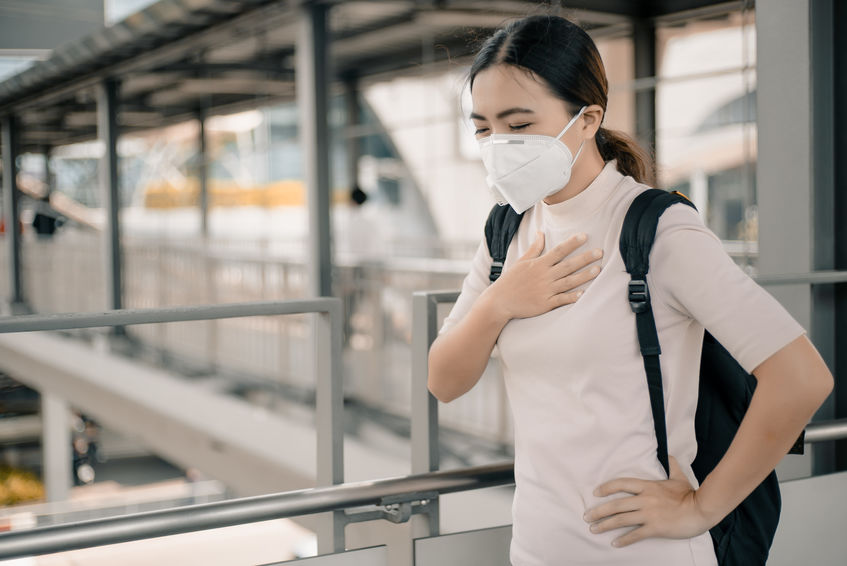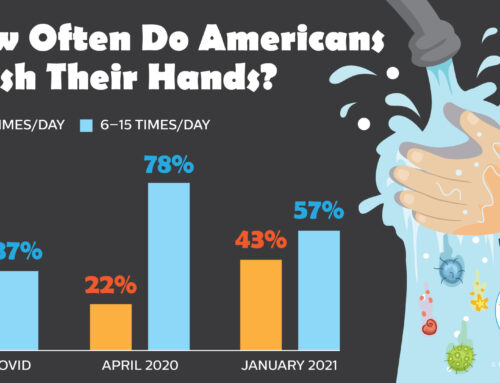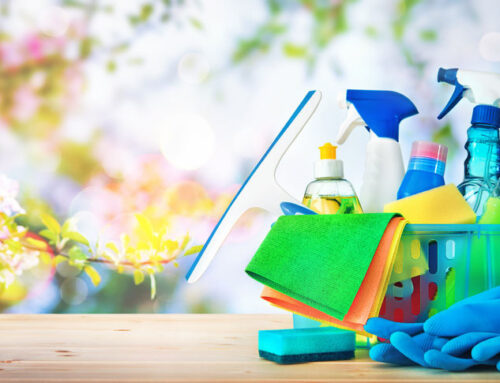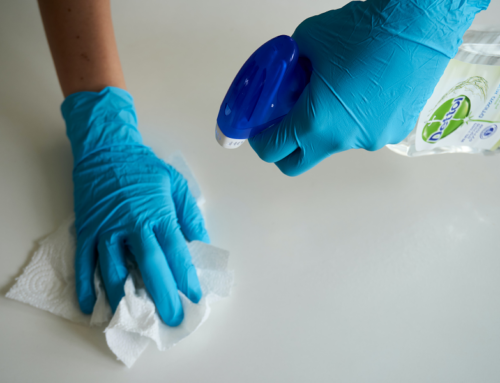The coronavirus that originated in China has been all over the news lately. As the ability to travel throughout the world in a matter of hours has become a part of our daily lives, microbes and disease move with us. As we deal with all types of infections as a part of this mobility, it’s critical not to forget that cleaning is important to health and the control of all types of germs, locally and worldwide.
As of this writing, the World Health Organization (WHO) declined to declare a global health emergency due to the new coronavirus, stating that while there is certainly an emergency in China, it’s too early to call the outbreak a global public emergency. The WHO will reconsider as the situation changes.
The outbreak is believed to have originated in December in a seafood and meat market in the city of Wuhan. China alerted the WHO of an outbreak of unusual pneumonia cases at the end of December. The next day authorities in Wuhan closed the seafood market that many of the initial cases had either worked in or shopped at. In addition to fish, the market also sold wild game. The animal source of the virus at the market has not yet been definitively identified, but some type of game is the likely source.
Here, stateside, five definite cases of the virus from Wuhan have been identified as of this writing, and more are being investigated. Health officials stress, however, that the chances of catching the coronavirus in the U.S. are low and that other illnesses, such as measles and the flu, are a much bigger risk to the American public.
Based on information the CDC has so far, the Wuhan coronavirus has an incubation period of around two weeks. Travelers should also monitor for symptoms for 14 days after returning to the U.S.
The virus, called 2019 novel coronavirus (2019-nCoV) has infected thousands of people in China so far, and over 100 deaths in China have been reported. This coronavirus is a member of a family of viruses that include severe acute respiratory syndrome (SARS) and Middle East respiratory syndrome (MERS). The mortality rate of this new virus is estimated to be around 3%, compared to 10% with SARS and 30-35% with MERS. It may be less virulent than these two, or it may evolve – it’s too early to know. Reports from China, however, indicate that many patients who have died were over 60 years old, had other illnesses such as diabetes, and were admitted to hospitals when their illnesses were advanced.
The new 2019-cCoV is a respiratory infection almost certainly transmitted through kissing, sneezing, coughing, and coming in contact with saliva. The symptoms of this virus are similar to many other types of respiratory infection, so how do you tell them apart? If someone comes to an emergency room in the U.S. and hasn’t been to China, they likely have the flu or some other virus. But if they came from Wuhan, it’s likely to be the new coronavirus. So far, there have been no reports of anyone getting 2019-nCoV from another person here in the states. Since the symptoms are very common to a number of viruses, the diagnosis is made based upon epidemiology and confirmed with a specific test.
The Wuhan virus belongs to a family of viruses known as coronaviruses, named after the crown-like spikes on their surfaces. Coronavirus is transmitted through the air and primarily infects the upper respiratory and gastrointestinal tract of most bats, pigs, and small mammals. They mutate easily and can jump from animals to humans, and from one human to another. In recent years they have become a growing player in infectious-disease outbreaks world-wide. Coronaviruses represent 10 to 30 percent of common colds. Over the past 18 years there have been three coronaviruses identified from animal reservoirs; SARS, MERS, and now 2019-nCoV. Though most members of the coronavirus family only cause mild flu-like symptoms during infection, SARS and MERS can infect both upper and lower airways and cause severe respiratory illness and other complications in humans. There can be several intermediary hosts, but with SARS and MERS the primary host was a bat. The CDC doesn’t know the intermediary host for the 2019-nCoV yet, but the primary host is again thought to be bats.
Like other viruses, there is no cure, so treatment is mostly for symptoms, which include fever, cough, and other symptoms of pneumonia. Antivirals already on the market might treat the infection. Antibiotics are prescribed for complicating bacterial infections, and patients with trouble breathing are put on respirators as needed. Most patients in China feel bad but are doing well. A portion of them, however, are very ill and are on respirators. A vaccine is already starting to be developed, but it will take a year or more to have a usable vaccine.
Although news about the new coronavirus is scary, here in the U.S. you are more likely to catch a cold or the flu this winter. All types of germs spread easily when people are in close contact with each other, especially in places like airports, work, or school.
Here are some common-sense tips for keeping your environment healthy and clean to avoid getting sick:
- Wash your hands with soap and water throughout the day using the CDC’s five simple steps: 1) Wet, 2) Lather, 3) Scrub for at least 20 seconds, 4) Rinse, 5) Dry thoroughly.
- If you don’t have access to soap and water, use hand sanitizers with at least 60% alcohol.
- Boost your immune system by getting proper rest and eating healthy.
- If you are sick, stay at home! Viruses like the flu are highly contagious.
- Avoid or limit contact with sick individuals as much as possible.
- Cover your mouth when you cough and sneeze.
- Don’t touch your eyes, nose, or mouth with unclean hands.
- Get a flu shot! A flu shot can reduce the risk of illness by 40-60 percent, help reduce the severity of the illness if you do catch the flu, and help protect those who are vulnerable to disease.
Here are some specific cleaning tips:
- Thoroughly clean and disinfect high-touch surface areas, such as door handles, light switches, handrails, toilet handles, cupboard knobs, writing utensils, phones, computers/tablets/keyboards/mice, faucets, remote controls, etc. Germs can live on surfaces for quite a while and be passed on to the next user.
- If you aren’t using disposable cleaning cloths, have plenty of clean cloths available and use them! When one cloth gets dirty, grab a clean one and continue instead of rinsing out the dirty one. This prevents you from just spreading dirt and germs around on a surface.
- Create a cleaning schedule to address high traffic areas in your home (for example, Kitchen Sundays, Bedroom Mondays, Bathroom Tuesdays, Wash Wednesdays, etc.), and make it fun!
- Soap/detergent and water are great for regular cleaning, but if you have an ill person in your home you might want to break out the chlorine bleach or another disinfectant. Disinfectants kill microbes on surfaces. To disinfect, you must clean all soil off the surface first. Do this even if it doesn’t look dirty. Read the label on the chlorine bleach or disinfectant bottle so you know how long to leave the disinfectant on the surface, then spray the disinfectant onto the surface and let it dwell the recommended amount of time (usually three to 10 minutes depending on the disinfectant). If the surface dries before the dwell time ends, rewet the surface with the disinfectant. When the dwell time is up, wipe with a clean cloth or rinse with clean water. Do not just “spray and wipe” as this just spreads germs around on the surface.
- Use a bleach or disinfectant solution to clean surfaces such as countertops, sinks, toilets, and other surfaces. Chlorine bleach and disinfectants are effective in killing many types of viruses. But remember, do not mix bleach and ammonia products together.
- Keep your cleaning equipment clean. Change vacuum bags regularly, wash and sanitize toilet and scrub brushes. Wash cleaning cloths in 140 degrees F (60 degrees C) water with laundry detergent and dry thoroughly.
- Consider using microfiber cloths in place of cotton cloths to clean. Made from synthetic materials, typically a polyester-nylon blend, microfiber is a very fine, highly absorbent material which makes it more effective than cotton at picking up and removing soil and germs from surfaces.
- If you want to avoid using chemicals, you might consider these options:
- The ADVAP Ladybug with TANCS Technology is recognized by the US EPA as a disinfecting device and is a one-step cleaning and disinfecting process. The Ladybug has been proven to kill germs on surfaces in seven seconds, as opposed to longer times for other dry steam vapor systems. Longer time exposed to the high heat of steam may damage certain surfaces.
- Aqueous ozone is created using air, water, and electricity to produce a cleaning, sanitizing, and deodorizing solution that is free of added fragrance and toxins. Ozone in water has been used for over a century to disinfect and purify drinking water, wash fresh fruits and vegetables, and sanitize food prep areas. Tersano is a company that makes aqueous ozone equipment for home use.
As individuals, we need to look at our own behaviors, identify which ones might spread infection, and be responsible enough to change them. Our practices, both personal and in cleaning for our families, should become second nature to diminish or prevent the impact of any type of infectious outbreak, whether it a cold, the flu, or something much more dangerous.
Related:
World Health Organization Hand Washing Technique Will Reduce COVID-19 Infections
How Do You Clean for a Cancer Patient
During COVID-19, Health Specialists Continue to Have Their Homes Professionally Cleaned
About Castle Keepers House Cleaning

LET US DO THE CLEANING. YOU DO THE RELAXING.







